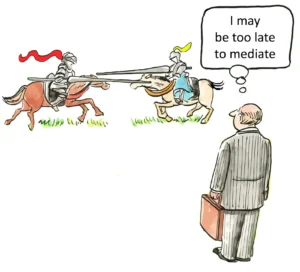Drug Trafficking Mandatory Minimum Sentences: Defense Strategies
The American criminal justice system has long grappled with the tension between rigid sentencing structures and judicial discretion. At the heart of this tension lie mandatory minimum sentences for drug trafficking offenses—a cornerstone of federal criminal law that significantly impacts thousands of defendants annually. These inflexible sentencing provisions, which require judges to impose predetermined prison terms regardless of individual circumstances, have transformed the landscape of drug crime defense and pose unique challenges for legal practitioners and defendants alike. Understanding the intricacies of these sentencing regimes and developing effective defense strategies is paramount for anyone facing the harsh reality of drug trafficking charges in the federal system.
Of the 64,124 cases reported to the U.S. Sentencing Commission in fiscal year 2023, 17,080 involved an offense carrying a statutory mandatory minimum penalty. The prevalence of these cases underscores the critical importance of developing robust defense approaches that can potentially mitigate or circumvent these severe sentencing provisions. The legal landscape surrounding drug trafficking penalties continues to evolve, with recent developments offering both challenges and opportunities for defendants and their counsel.
The Framework of Mandatory Minimum Sentencing
The foundation of mandatory minimum sentences in federal drug cases rests primarily on the type and quantity of controlled substances involved. Congress has established a tiered system that imposes increasingly severe penalties based on drug weight thresholds. For instance, trafficking in 5 grams or more of methamphetamine or 28 grams or more of crack cocaine can trigger a 5-year mandatory minimum sentence. These penalties escalate dramatically when larger quantities are involved or when certain aggravating factors are present.
The severity of these sentences reflects a legislative determination that drug trafficking represents a serious threat to public safety and welfare. The underlying theory posits that fixed, substantial penalties will deter potential offenders and incapacitate those who engage in drug distribution. However, this approach has faced mounting criticism for its rigidity and failure to account for the diverse circumstances that may surround a defendant’s involvement in drug-related activities.
Federal drug crime sentencing becomes particularly severe when certain enhancements apply. If a defendant has prior drug felony convictions, the mandatory minimums can double. Even more concerning, if the use of the trafficked substance results in death or serious bodily injury, a 20-year mandatory minimum sentence can be imposed. These enhancements reflect a punitive approach that prioritizes retribution and incapacitation over rehabilitation or individualized justice.
The Impact on the Criminal Justice System
The implementation of mandatory minimum sentencing has fundamentally altered the dynamics of criminal prosecution and defense. Perhaps most significantly, these provisions have shifted substantial power from judges to prosecutors, who effectively control sentencing outcomes through their charging decisions. By determining which charges to bring and which drug quantities to allege, prosecutors can dictate whether a defendant will face a mandatory minimum sentence.
This shift in power has led to what many critics call the “trial penalty”—the substantial difference between the sentence offered in a plea agreement and the sentence imposed after trial. When mandatory minimums loom, defendants often feel compelled to accept plea deals, even when they might have viable defenses, simply to avoid the risk of decades in prison. This dynamic has contributed to the decline of criminal trials and raised concerns about the erosion of the Sixth Amendment right to trial by jury.
The impact of mandatory minimums extends beyond individual cases to affect the entire criminal justice system. These provisions have contributed significantly to federal prison overcrowding and strained correctional resources. Moreover, they have exacerbated racial disparities in sentencing, as studies consistently show that Black and Hispanic defendants are more likely to be charged with offenses carrying mandatory minimums than their white counterparts. These systemic effects have fueled calls for reform across the political spectrum.
Early Intervention: The Critical First Line of Defense
When facing charges that carry mandatory minimum sentences, time is of the essence. Early intervention by experienced legal counsel can dramatically alter the trajectory of a case and potentially prevent the application of these severe penalties. The moment a person becomes aware they are under investigation or have been arrested for a drug-related offense, securing competent representation should be their highest priority.
Early legal intervention allows defense counsel to preserve crucial evidence, interview witnesses before memories fade, and identify potential constitutional violations in the arrest or search procedures. Perhaps most importantly, it provides an opportunity to engage with prosecutors before formal charges are filed. During this pre-charging phase, skilled defense attorneys may be able to persuade prosecutors to pursue charges that do not carry mandatory minimums or to agree to drug quantity allegations below the triggering thresholds.
The value of early intervention extends to bail and pretrial release considerations as well. Defendants who remain free pending trial have better access to their attorneys, can more actively participate in their defense, and can demonstrate stability and community ties that may later influence sentencing decisions. Given the high stakes involved in drug trafficking cases, investing in robust legal representation from the outset is not merely advisable—it is essential.
Challenging the Evidence: Constitutional and Procedural Defenses
A thorough examination of the evidence and the methods used to obtain it forms the cornerstone of many successful defenses against drug trafficking charges. The Fourth Amendment’s protections against unreasonable searches and seizures provide fertile ground for challenging the government’s case. If law enforcement conducted a search without a valid warrant or without meeting an exception to the warrant requirement, the resulting evidence may be suppressed.
Common Fourth Amendment challenges in drug cases include contesting the validity of traffic stops, questioning the existence of probable cause for searches, and challenging the scope of consent searches. Similarly, if a defendant’s statements were obtained in violation of their Miranda rights or through coercive interrogation techniques, those statements may be excluded from trial. These constitutional challenges can significantly weaken the prosecution’s case and may lead to dismissal of the charges.
Beyond constitutional issues, procedural defenses can also prove effective. These include challenging the chain of custody for drug evidence, questioning the reliability of drug testing methods, and scrutinizing the conduct of confidential informants or undercover officers. In cases involving wiretaps or electronic surveillance, defense counsel should carefully review compliance with the stringent requirements of Title III of the Omnibus Crime Control and Safe Streets Act. Each of these approaches requires meticulous attention to detail and a comprehensive understanding of criminal procedure.
Substantive Defenses: Contesting the Elements of the Offense
In addition to procedural and constitutional challenges, defendants facing drug trafficking charges may have substantive defenses that contest the government’s ability to prove the elements of the offense. One common defense is lack of knowledge or intent—arguing that the defendant was unaware of the presence of drugs or did not intend to distribute them. This defense may be particularly viable in cases involving couriers or where drugs were concealed in vehicles or luggage.
Another potential defense is entrapment, which occurs when law enforcement induces a person to commit a crime they were not predisposed to commit. While entrapment defenses face significant hurdles in federal court, they may succeed in cases involving aggressive undercover operations or where the defendant has no prior history of drug offenses. Similarly, a defense of duress may be available if the defendant can demonstrate they participated in the drug activity only because of threats of imminent harm.
Challenging the government’s evidence regarding drug type and quantity can also be crucial, as these factors directly impact whether mandatory minimums apply. Defense experts may contest the methods used to weigh drugs, particularly when mixtures or cutting agents are involved. In some cases, defense counsel may be able to argue that the defendant’s role was limited to a single transaction rather than the broader conspiracy alleged by the government, potentially reducing the quantity attributable to the defendant.
Negotiating with Prosecutors: Plea Bargaining Strategies
Given the severe consequences of mandatory minimum sentences, plea negotiations often represent the most realistic path to avoiding these penalties. While prosecutors hold significant leverage in these negotiations, skilled defense attorneys can employ various strategies to secure more favorable outcomes for their clients. Understanding the prosecutor’s priorities, the strengths and weaknesses of the government’s case, and the applicable sentencing provisions is essential for effective negotiation.
One common approach is to negotiate a plea to a lesser included offense that does not carry a mandatory minimum. For example, simple possession of a controlled substance, while still a serious offense, typically does not trigger mandatory minimums. Similarly, defense counsel may seek to negotiate the drug quantity alleged in the plea agreement to fall below the threshold that would trigger a mandatory minimum. These negotiations require a delicate balance of assertiveness and pragmatism.
Another strategy involves seeking what is known as a “charge bargain,” where the defendant agrees to plead guilty to a non-drug offense in exchange for dismissal of the drug trafficking charges. Depending on the circumstances, charges such as using a communication facility in furtherance of a drug offense (which carries a maximum of four years rather than a mandatory minimum) may provide an alternative resolution. These creative approaches require prosecutors willing to exercise their discretion in the interest of justice.
Statutory Relief: Safety Valve and Substantial Assistance
Congress has recognized that mandatory minimum sentences may produce unjust results in certain cases and has created limited exceptions to their application. The most significant of these is the “safety valve” provision, which allows courts to sentence below the mandatory minimum for certain non-violent drug offenders with limited criminal histories. To qualify for the safety valve, defendants must meet five criteria: (1) no more than one criminal history point; (2) no violence, credible threats, or firearms involvement; (3) the offense did not result in death or serious injury; (4) no leadership role; and (5) full and truthful disclosure to the government.
The First Step Act of 2018 expanded the safety valve by increasing the criminal history eligibility from one point to four points, provided the defendant does not have a prior “serious drug felony” or “serious violent felony.” This expansion has made relief available to a broader category of defendants. However, the requirement for full disclosure to the government often presents difficult choices for defendants, as it may implicate others and potentially expose them to retaliation.
Another statutory avenue for relief is the “substantial assistance” provision, which allows courts to impose sentences below the mandatory minimum upon motion by the government certifying that the defendant has provided substantial assistance in the investigation or prosecution of another person. The extent of the reduction depends on factors such as the significance of the information provided, the completeness of the assistance, and the timeliness of the cooperation. While this provision can lead to dramatic sentence reductions, it requires defendants to become government informants—a role that carries significant risks and ethical dilemmas.
Sentencing Advocacy: Minimizing the Impact
Even when mandatory minimums cannot be avoided entirely, effective sentencing advocacy can still make a meaningful difference in the ultimate outcome. While judges must impose at least the mandatory minimum term, they retain discretion regarding where within or above that range to sentence a defendant. Presenting compelling mitigating evidence and humanizing the defendant can persuade judges to impose the minimum required sentence rather than a longer term.
Effective sentencing advocacy begins with a thorough investigation of the defendant’s background, including educational and employment history, family circumstances, community involvement, and any history of substance abuse or mental health issues. Expert evaluations, character letters from family and community members, and evidence of post-arrest rehabilitation can all strengthen the case for leniency. Defense counsel should also be prepared to address the statutory sentencing factors outlined in 18 U.S.C. § 3553(a), emphasizing those that support a more lenient sentence.
In cases involving defendants with substance use disorders, presenting evidence of addiction as a mitigating factor can be particularly effective. This may include expert testimony regarding the nature of addiction, the defendant’s history of substance abuse, and their prospects for successful treatment. Similarly, for defendants with mental health issues, psychological evaluations can help explain the relationship between their condition and their criminal conduct. While these factors cannot eliminate a mandatory minimum, they can influence judicial discretion within the constraints of the statutory framework.
Post-Conviction Relief: Continuing the Fight
For defendants who have been sentenced under mandatory minimum provisions, the fight does not necessarily end with conviction and sentencing. Various forms of post-conviction relief may be available, depending on the circumstances of the case and developments in the law. These include direct appeals, motions for sentence reduction, and habeas corpus petitions.
Direct appeals offer an opportunity to challenge legal errors that occurred during the trial or sentencing process. While appellate courts generally defer to trial court findings of fact, they review questions of law de novo. Issues such as the interpretation of sentencing statutes, the constitutionality of searches and seizures, and the adequacy of jury instructions may provide grounds for appeal. However, defendants who pleaded guilty typically waive many potential appellate issues as part of their plea agreements.
Beyond direct appeals, changes in the law may create opportunities for sentence reductions. For example, when Congress reduces statutory penalties or the Sentencing Commission amends the guidelines, these changes may be made retroactive, allowing current inmates to seek reduced sentences. The First Step Act of 2018 made the Fair Sentencing Act of 2010 retroactive, enabling many defendants sentenced under the previous crack cocaine laws to seek relief. Similarly, the proposed amendments to federal drug sentencing guidelines announced by the U.S. Sentencing Commission in January 2025, which include lowering the highest base offense level for drug sentences, could provide relief for many defendants if finalized and made retroactive.
The Evolving Landscape: Reform Efforts and Future Directions
The landscape of drug crime sentencing continues to evolve, with reform efforts gaining momentum at both the federal and state levels. Almost half of all states, as well as the federal government, have reduced or eliminated some mandatory minimums related to drug offenses in recent years. These reforms reflect growing recognition of the limitations and unintended consequences of rigid sentencing structures.
The reform movement has been driven by a diverse coalition of interests, including fiscal conservatives concerned about the cost of mass incarceration, civil rights advocates focused on racial disparities, and public health experts who view addiction primarily as a medical rather than criminal issue. This convergence of perspectives has created political space for meaningful changes to sentencing policies that once seemed untouchable.
However, the path forward is not without obstacles. Recent proposals, such as the HALT Act, which would automatically classify all fentanyl-related drugs as Schedule I substances and subject distributors to mandatory minimums, demonstrate that some policymakers continue to favor punitive approaches to drug offenses. Similarly, Conservative Leader Pierre Poilievre’s recent proposal for mandatory life sentences for fentanyl “kingpins” in Canada reflects ongoing political support for harsh sentencing policies, particularly for drugs perceived as especially dangerous.
Practical Considerations for Defense Attorneys
For defense attorneys representing clients facing drug trafficking charges, navigating the complexities of mandatory minimum sentencing requires a multifaceted approach. First and foremost, counsel must develop a comprehensive understanding of the applicable statutes, sentencing guidelines, and case law. This knowledge forms the foundation for effective advocacy at every stage of the proceedings.
Building a strong attorney-client relationship is equally important. Clients facing the prospect of lengthy mandatory sentences are understandably frightened and may be tempted to make hasty decisions. Defense counsel must earn their trust through clear communication, honest assessment of the case, and unwavering dedication to their interests. This trust enables attorneys to guide clients through difficult decisions, such as whether to cooperate with the government or proceed to trial.
Collaboration with other professionals can significantly enhance the defense effort. This may include working with investigators to uncover exculpatory evidence, consulting with forensic experts to challenge drug testing or quantity determinations, and partnering with sentencing consultants to develop compelling mitigation presentations. In cases involving clients with substance use disorders or mental health issues, coordination with treatment providers can help demonstrate the client’s commitment to rehabilitation.
Alternative Sentencing Options: Beyond Incarceration
While mandatory minimums often focus exclusively on imprisonment, the criminal justice system increasingly recognizes the value of alternative sentencing approaches, particularly for non-violent drug offenders. Defense attorneys should be familiar with these alternatives and advocate for their application when appropriate.
Drug courts represent one of the most established alternatives to traditional prosecution and sentencing. These specialized courts combine judicial supervision with treatment services to address the underlying substance use disorders that contribute to criminal behavior. Participants typically undergo regular drug testing, attend treatment sessions, and appear frequently before the judge to review their progress. Successful completion of the program may result in reduced charges or sentences.
Residential treatment facilities offer another alternative for defendants with substance use disorders. These programs provide structured environments where individuals can address their addiction while remaining separated from triggers and negative influences. In some cases, judges may be willing to sentence defendants to time in treatment facilities rather than prison, particularly if the defendant has demonstrated a genuine commitment to recovery.
Home confinement with electronic monitoring represents a less restrictive alternative that still provides significant supervision. This approach allows defendants to maintain employment, support their families, and participate in treatment while serving their sentences. While mandatory minimums often preclude exclusive reliance on home confinement, it may be incorporated as part of a split sentence that includes some period of incarceration followed by home confinement.
The Human Cost: Beyond Legal Considerations
Beyond the legal intricacies and strategic considerations, it is essential to recognize the profound human impact of mandatory minimum sentences for drug offenses. These penalties affect not only defendants but also their families and communities. Children separated from incarcerated parents, spouses struggling to maintain households, and communities depleted of productive members all bear the collateral consequences of these sentencing policies.
The economic implications are equally significant. The cost of incarcerating a federal prisoner exceeds $40,000 per year, representing a substantial public expenditure with questionable returns in terms of public safety or rehabilitation. Moreover, the long-term economic consequences for individuals who serve lengthy sentences include diminished employment prospects, reduced lifetime earnings, and increased reliance on public assistance.
These human and economic costs have prompted a reevaluation of the underlying assumptions of mandatory minimum sentencing policies. Increasingly, policymakers and practitioners are questioning whether these penalties truly advance the goals of deterrence, incapacitation, rehabilitation, and retribution that animate the criminal justice system. This reevaluation has opened space for more nuanced approaches that balance accountability with proportionality and redemption.
Conclusion: Navigating Complexity with Clarity and Purpose
The realm of drug trafficking mandatory minimum sentences presents a landscape of extraordinary complexity and consequence. For defendants facing these charges, the stakes could not be higher—years or even decades of freedom hang in the balance. For defense attorneys, the challenge lies in navigating this terrain with both technical precision and human compassion, leveraging every available legal tool while never losing sight of the individual whose life and liberty they are entrusted to defend.
The most effective defense strategies combine rigorous legal analysis with creative problem-solving and persuasive advocacy. From challenging the constitutionality of searches to negotiating favorable plea agreements, from qualifying for statutory relief to presenting compelling mitigation evidence, each case requires a tailored approach that responds to its unique circumstances. There is no one-size-fits-all solution, but rather a constellation of potential pathways that skilled counsel must evaluate and pursue as appropriate.
As the legal and political landscape continues to evolve, staying abreast of developments in legislation, case law, and sentencing policy is essential. The recent proposals by the U.S. Sentencing Commission to amend federal drug sentencing guidelines, if finalized, could significantly impact sentencing outcomes and create new opportunities for relief. Similarly, ongoing reform efforts at the state and federal levels may open additional avenues for avoiding or mitigating mandatory minimums.
In this dynamic environment, the value of knowledgeable, dedicated legal representation cannot be overstated. For those facing the prospect of mandatory minimum sentences, securing counsel with specific expertise in federal drug cases may be the single most important decision they make. With skilled advocacy and strategic thinking, even the most challenging cases may yield more favorable outcomes than initially seemed possible. While the road ahead may be difficult, it is not without hope or possibility.
Citations:
- DEA Drug Trafficking Penalties Chart
- Defenses Against Drug Trafficking Charges
- Mandatory Minimums and Mass Incarceration
- Mandatory Minimums in Drug Crime Cases
- Overview of Mandatory Minimum Sentencing
- SEO Strategies for Criminal Defense
- PPC Campaigns for Drug Rehab
- Federal Drug Mandatory Minimum Chart
- Fighting Drug Charges with Defense Strategies
- Mandatory Minimums for Drug Offenses
- Finding Easy-to-Rank Keywords Guide
- AdWords Keywords for Criminal Defense
- Congressional Report on Drug Sentencing
- Mandatory Minimum Sentencing Insights
- Lessons on Mandatory Minimums and Drugs
- Backgrounder on Drug Mandatory Minimums
- Mandatory Minimum Penalties for Drug Offenses
- Brennan Center on Ending Mandatory Minimums
- Quick Facts on Mandatory Minimum Penalties
- RAND Research on Drug Sentencing
- Consequences of Drug Trafficking
- PBS Frontline on Snitching in Drug Cases
- Federal Drug Statutes Overview
- Defending a Drug Trafficking Case
- Federal Trafficking Penalties by Schedule
- Quick Facts on Drug Trafficking Sentencing
- FAMM Sentencing Reform Advocacy
- Changes in Mandatory Drug Sentencing
- Ending Mandatory Minimums for Drug Cases
- SEO Strategies for Criminal Defense Attorneys
- Criminal Defense Attorney Keywords Guide
- Criminal Defense Marketing Services
- SEO for Criminal Defense Law Firms
- Keyword Research for Drug Rehab Centers
- DoD Framework to Counter Drug Trafficking
- SEO vs PPC for Drug Rehabs
- Defending Against Federal Drug Charges
- ScienceDirect Study on Drug Sentencing
- RUSI on Drug Cartel Fragmentation
- Federal Drug Minimum Mandatory Sentences
- Chart of All Federal Mandatory Minimums
- Ending Mandatory Minimums for Nonviolent Offenses
- Congressional Research on Drug Sentencing Laws
- Marketing for Criminal Defense Law Firms
- USSC Research on Drug Mandatory Minimums
- Philosophical Archive on Mandatory Minimums




















